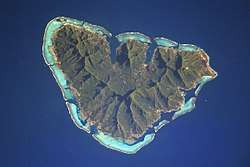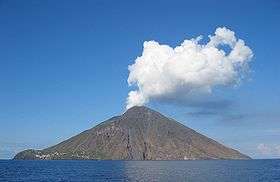High island


In geology (and sometimes in archaeology), a high island or volcanic island is an island of volcanic origin. The term can be used to distinguish such islands from low islands, which are formed from sedimentation or the uplifting of coral reefs[1] (which have often formed on sunken volcanos).
Definition and origin
There are a number of "high islands" which rise no more than a few feet above sea level, often classified as "islets or rocks", while some "low islands", such as Makatea, Nauru, Niue, Henderson and Banaba, as uplifted coral islands, rise several hundred feet above sea level.
The two types of islands are often found in proximity to each other, especially among the islands of the South Pacific Ocean, where low islands are found on the fringing reefs that surround most high islands. Volcanic islands normally arise above a so-called hotspot.
Habitability for humans
The differences in geology and topography between high and low islands mean a lot in terms of habitability for humans: high islands above a certain size usually have fresh groundwater, while low islands often do not. This hampers human settlement on many low islands.
See also
References
- ↑ Murphy, Raymond E. (July 1949). ""High" and "Low" Islands in the Eastern Carolines". Geographical Review. American Geographical Society. 39 (3): 425–439. doi:10.2307/210643. JSTOR 210643.
External links
- Micronesian culture: High island and low island cultures at Britannica.com. Retrieved 2011-09-22.